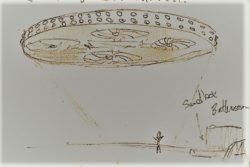
Alien Abduction In The Gobi Desert? The Disappearance Of Peng Jiamu
- By
- May 22, 2024
- 8 min read
- Expert Opinion
- Posted in
- Supernatural, Disappearances
The disappearance of respected scientist Peng Jiamu somewhere in the Gobi Desert in June 1980 remains unsolved today, almost half a century later. Among the many suggestions as to what happened to Peng, as speculative as it might, is that he was abducted by extraterrestrial entities. And while this might sound a little tenuous and without evidence, the fact is the Gobi Desert and China, in general, have a long history of UFOs and apparent interaction with otherworldly entities, including claims of extraterrestrial facilities in the region.
 While many are dismissive of such claims, they are not as outlandish as we might initially think. Despite extensive searches for the missing scientist, for example, there was no sign of h...
While many are dismissive of such claims, they are not as outlandish as we might initially think. Despite extensive searches for the missing scientist, for example, there was no sign of h...
Fact Checking/Disclaimer
The stories, accounts, and discussions in this article may go against currently accepted science and common beliefs. The details included in the article are based on the reports, accounts and documentation available as provided by witnesses and publications - sources/references are published above.
We do not aim to prove nor disprove any of the theories, cases, or reports. You should read this article with an open mind and come to a conclusion yourself. Our motto always is, "you make up your own mind". Read more about how we fact-check content here.
Copyright & Republishing Policy
The entire article and the contents within are published by, wholly-owned and copyright of UFO Insight. The author does not own the rights to this content.
You may republish short quotes from this article with a reference back to the original UFO Insight article here as the source. You may not republish the article in its entirety.





